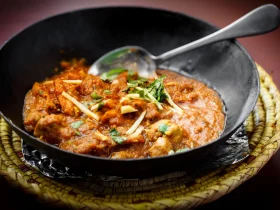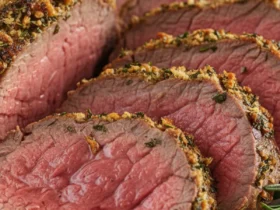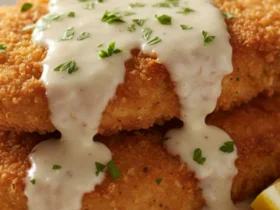Are you craving a delicious and mouthwatering pizza? Look no further than this amazing homemade pepperoni pizza recipe. With its crispy crust, tangy tomato sauce, gooey cheese, and flavorful pepperoni, this pizza will surely satisfy your taste buds. In this article, we will guide you through the step-by-step process of making a delectable pepperoni pizza from scratch. Get ready to impress your family and friends with this irresistible pizza!
[ez-toc]
History
The origins of pizza can be traced back to ancient times, with early versions of flatbreads topped with various ingredients being enjoyed by different cultures. The ancient Greeks, Egyptians, and Romans all had their own variations of flatbreads topped with herbs, olive oil, and other toppings.
However, the modern pizza as we know it today has its roots in Naples, Italy. It was in Naples during the late 18th and early 19th centuries that pizza began to evolve into its recognizable form. The Neapolitans added tomatoes, which were a recently introduced ingredient from the New World, to their flatbread, creating the first pizza margherita.
The pizza margherita, named after Queen Margherita of Italy, featured the colors of the Italian flag with its toppings of tomatoes (red), mozzarella cheese (white), and basil leaves (green). This simple yet flavorful combination became a favorite among the locals and helped to popularize pizza in Naples and beyond.
In the late 19th century, Italian immigrants brought pizza to the United States, particularly in cities like New York and Chicago. Initially, pizza was primarily consumed within Italian communities but gained popularity among a broader audience over time.
In the mid-20th century, the introduction of commercial pizza ovens, the development of pizza delivery services, and the establishment of pizza chains contributed to the widespread popularity of pizza across the United States and eventually worldwide. Today, pizza is enjoyed in various forms and with a wide range of toppings, including the beloved pepperoni pizza.
Time
| Step | Time |
|---|---|
| Making the Pizza Dough | 1 hour |
| Preparing the Tomato Sauce | 20 minutes |
| Assembling the Pizza | 15 minutes |
| Baking the Pizza | 12-15 minutes |
| Serving and Enjoying | N/A |
Please note that the times mentioned are approximate and may vary depending on individual preferences and equipment used. It’s always a good idea to refer to specific recipe instructions for more precise timing.
Ingredients
| Ingredients | Quantity |
|---|---|
| Pizza dough | Enough for 2 pizzas |
| Tomato sauce | 1 cup |
| Mozzarella cheese | 1 ½ cups, shredded |
| Pepperoni slices | About 40 slices |
| Olive oil | 2 tablespoons |
| Salt | To taste |
| Garlic powder | 1 teaspoon |
| Dried oregano | 1 teaspoon |
| Fresh basil leaves | A handful (optional) |
Feel free to adjust the quantities based on your personal preferences or dietary restrictions. Enjoy making and savoring your delicious homemade pepperoni pizza!
Directions
Step 1: Making the Pizza Dough
- Activate the yeast: In a large bowl, combine warm water, yeast, and a pinch of sugar. Let it sit for about 5 minutes until the yeast is activated and foamy.
- Mix the dough ingredients: Gradually add flour, salt, and olive oil to the bowl. Mix the ingredients until they form a shaggy dough.
- Knead the dough: Transfer the dough onto a floured surface and knead it for about 5-7 minutes until it becomes smooth and elastic.
- Let the dough rise: Place the dough in a greased bowl, cover it with a clean cloth, and let it rise in a warm area for approximately 1 hour or until it doubles in size.
Step 2: Preparing the Tomato Sauce
- Sauté the garlic: Heat olive oil in a saucepan over medium heat. Add minced garlic and sauté for about 1 minute until fragrant.
- Add the tomato sauce ingredients: Pour crushed tomatoes into the saucepan and stir in salt, garlic powder, and dried oregano.
- Simmer the sauce: Simmer the sauce for 15-20 minutes, allowing the flavors to meld together.
- Cool the sauce: Remove the sauce from the heat and let it cool before using it as a base for your pizza.
Step 3: Assembling the Pizza
- Preheat the oven: Preheat your oven to the highest temperature setting (usually around 475°F or 245°C).
- Roll out the dough: On a floured surface, roll out the pizza dough to your desired thickness and shape.
- Transfer the dough: Transfer the rolled-out dough onto a baking sheet or pizza stone.
- Add the sauce: Spread a generous amount of tomato sauce evenly over the dough, leaving a small border around the edges.
- Add the toppings: Sprinkle a generous amount of shredded mozzarella cheese on top of the sauce. Arrange the pepperoni slices over the cheese.
- Optional: Add fresh basil: If desired, scatter some fresh basil leaves over the pizza.
- Bake the pizza: Place the pizza in the preheated oven and bake for 12-15 minutes, or until the crust is golden and the cheese is bubbly and slightly browned.
Step 4: Serving and Enjoying
- Cool and slice: Remove the pizza from the oven and let it cool for a few minutes. Slice it into desired portions.
- Serve and enjoy: Serve the delicious pepperoni pizza while it’s still warm. Enjoy!
Feel free to customize your pizza with additional toppings or variations according to your taste preferences.
Equipment Required
Nutrition Information
| Nutrition Facts | Amount per Serving |
|---|---|
| Serving Size | 1 slice (1/8 of pizza) |
| Calories | Approximately 250 |
| Total Fat | Approximately 12g |
| – Saturated Fat | Approximately 5g |
| Cholesterol | Approximately 25mg |
| Sodium | Approximately 500mg |
| Total Carbohydrates | Approximately 25g |
| – Dietary Fiber | Approximately 2g |
| – Sugars | Approximately 2g |
| Protein | Approximately 10g |
Please note that the provided nutrition information is an estimate and can vary depending on specific ingredients and portion sizes. It’s always a good idea to refer to specific product labels or consult a registered dietitian for more precise nutritional information based on your specific ingredients and preparation method.
Tips
- Pizza dough consistency: While kneading the dough, add flour gradually as needed until the dough reaches a smooth and elastic consistency.
- Rising time: Ensure that the dough is given enough time to rise properly, as this contributes to a lighter and more flavorful crust.
- Rolling out the dough: Use a rolling pin or your hands to roll out the dough evenly, aiming for a thickness that suits your preference.
- Pizza stone or baking sheet: If available, using a pizza stone can help achieve a crispier crust. Alternatively, a baking sheet works well too.
- Preheating the oven: Make sure to preheat the oven to the highest temperature setting for a hot and efficient baking process.
- Sauce-to-topping ratio: Adjust the amount of tomato sauce and toppings according to personal preference. Add more or less as desired.
- Variations: Feel free to experiment with different toppings such as sliced bell peppers, onions, mushrooms, or olives to create your own unique flavor combinations.
- Cheese options: Instead of mozzarella, try using a blend of cheeses like cheddar, provolone, or Parmesan for added richness and depth of flavor.
- Spicier option: If you prefer a spicier pizza, consider using spicy pepperoni or adding red pepper flakes or sliced jalapeños as toppings.
- Gluten-free or low-carb alternative: Substitute the pizza dough with a gluten-free pizza crust or a cauliflower crust for a gluten-free or low-carb option.
Pros & Cons
| Pros | Cons |
|---|---|
| ✔️ Delicious and flavorful | ❌ High in calories and fat |
| ✔️ Easy to customize with toppings | ❌ May not be suitable for vegetarians |
| ✔️ Great for social gatherings | ❌ Contains processed meat (pepperoni) |
| ✔️ Familiar and popular dish | ❌ Requires time to make the dough |
| ✔️ Can be enjoyed by people of all ages | ❌ Not suitable for gluten-free diets |
Conclusion
In conclusion, the pepperoni pizza recipe offers a delightful combination of flavors and a classic favorite that has stood the test of time. With its crispy crust, tangy tomato sauce, gooey cheese, and savory pepperoni, it’s a dish that is loved by many around the world.
While it may be a treat to indulge in occasionally due to its higher calorie and fat content, the sheer pleasure it brings makes it worth savoring. Whether you’re planning a cozy night in, hosting a gathering with friends, or simply craving a comforting meal, making your own pepperoni pizza can be a fun and rewarding experience.
The beauty of this recipe lies in its versatility. You can unleash your creativity and experiment with various toppings, cheeses, and even crust options to suit your taste preferences. From adding colorful vegetables to spicing it up with a touch of heat, the possibilities are endless.
So why not roll up your sleeves, gather your ingredients, and embark on a culinary adventure in your own kitchen? The aroma of freshly baked pizza wafting through your home, the joy of sharing a delicious meal with loved ones, and the satisfaction of creating something with your own hands are experiences to be cherished.
Don’t be afraid to put your own twist on the recipe and make it uniquely yours. It’s an opportunity to have fun, unleash your inner chef, and enjoy the mouthwatering results.
In the end, making your own pepperoni pizza is more than just a meal—it’s a celebration of flavors, a testament to your culinary prowess, and a memorable experience. So, why wait? Get ready to indulge in a slice of homemade goodness and embark on a culinary journey that will leave you craving for more. Bon appétit!
Facts
- 🍕 Fact 1: A Slice of History 🕰️
- Did you know that pepperoni pizza originated in the United States? It’s believed to have been introduced by Italian immigrants in the early 20th century, who combined their traditional pizza-making techniques with the popular American ingredient, pepperoni. The result? A delicious fusion of flavors that quickly gained popularity across the nation! 🇺🇸🍕
- 🍕 Fact 2: World Pizza Consumption 🌍🍕
- Pepperoni pizza holds a special place in the hearts (and stomachs) of pizza lovers worldwide. In fact, it’s estimated that approximately 36% of all pizzas ordered in the United States are topped with pepperoni. That’s a staggering amount considering the vast array of pizza choices available! 🌍🍕😋
- 🍕 Fact 3: The Perfect Cheese Pull 🧀🤤
- One of the most satisfying moments when indulging in a slice of pepperoni pizza is witnessing the perfect cheese pull. That stretchy, gooey goodness is made possible by the unique properties of mozzarella cheese. When melted, mozzarella’s proteins form a network that creates the iconic cheese pull we all love to capture in photos and videos. Say cheese! 🧀🤤📸
- 🍕 Fact 4: A Guinness World Record 🏆
- In 2006, the world’s largest pizza was created in Italy. This colossal pizza measured an astonishing 131 feet in diameter, requiring over 19,800 pounds of flour, 10,000 pounds of tomato sauce, and 8,800 pounds of mozzarella cheese. It took a team of chefs and volunteers to assemble and bake this record-breaking pizza, solidifying pizza’s place in the annals of culinary achievements! 🍕🌍🏆
- 🍕 Fact 5: Pizza Emoji Popularity 🍕🔥
- Pizza is so beloved that it has its own emoji: 🍕! Introduced in 2010 as part of Unicode 6.0, the pizza emoji quickly gained popularity, becoming one of the most frequently used food emojis. It has since become a symbol of comfort food, Friday nights, and casual get-togethers. So next time you want to express your love for pizza in a text or social media post, simply reach for the trusty pizza emoji! 🍕❤️😄
FAQ’s
Can I use store-bought pizza dough instead of making it from scratch?
Absolutely! Store-bought pizza dough can be a convenient option and will work well for this recipe. Just follow the instructions on the package for best results.
Can I make the pizza dough ahead of time and refrigerate it?
Yes, you can make the pizza dough ahead of time and refrigerate it. After kneading and letting it rise, cover the dough with plastic wrap and refrigerate for up to 24 hours. When ready to use, let it come to room temperature before rolling it out.
Can I freeze the pizza dough for future use?
Absolutely! After the dough has risen, divide it into individual portions, wrap each portion tightly in plastic wrap, and place them in a freezer-safe bag. Freeze for up to 3 months. Thaw in the refrigerator overnight before using.
Can I use a different type of cheese instead of mozzarella?
Certainly! While mozzarella is traditionally used for its meltability and mild flavor, you can experiment with other cheeses like provolone, cheddar, or a blend of cheeses to suit your taste.
How can I make a vegetarian version of pepperoni pizza?
To make a vegetarian version, you can skip the pepperoni and substitute it with your favorite vegetables such as bell peppers, onions, mushrooms, or olives. Feel free to get creative and add any veggies you enjoy.
Can I make the pizza without using tomato sauce?
Yes! While tomato sauce is a traditional base, you can explore alternative options such as using pesto, garlic-infused olive oil, or even a white sauce made with ricotta or alfredo for a different flavor profile.
Can I use turkey or chicken pepperoni instead of regular pepperoni?
Absolutely! Turkey or chicken pepperoni can be used as a substitute for regular pepperoni, especially if you prefer a leaner option or don’t consume pork.
Can I make mini or personal-sized pizzas with this recipe?
Yes, you can! Divide the dough into smaller portions and adjust the baking time accordingly. Personal-sized pizzas are a fun option for individual servings or when catering to different topping preferences.
How do I reheat leftover pizza to maintain its crispness?
To reheat leftover pizza, preheat your oven to 350°F (175°C) and place the slices on a baking sheet. Bake for about 10 minutes or until heated through. This method helps retain the crispness of the crust.
Can I use gluten-free flour to make a gluten-free pizza crust?
Absolutely! There are many gluten-free flour blends available that can be used to make a gluten-free pizza crust. Follow the instructions on the specific flour blend package for the best results.












Leave a Review